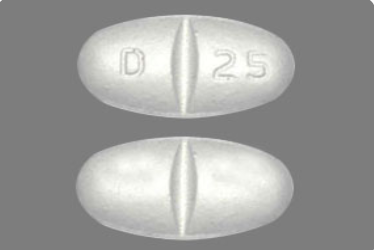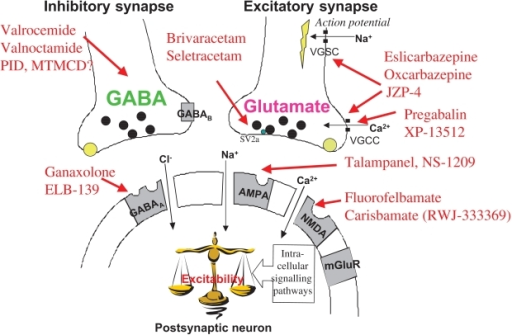Gabapentin is a medicine that may be used for the treatment of certain seizure disorders or nerve pain.

Gabapentin is a medication primarily used to treat seizures and nerve pain. It belongs to a class of drugs known as anticonvulsants or antiepileptic drugs. Gabapentin works by affecting the neurotransmitters in the brain, specifically by modulating the activity of gamma-aminobutyric acid (GABA), a neurotransmitter that inhibits brain activity.
Here are some common uses of gabapentin:
- Epilepsy: Gabapentin is approved by the FDA (Food and Drug Administration) for the treatment of partial seizures in adults and children.
- Nerve Pain (Neuropathic Pain): Gabapentin is frequently prescribed off-label for various types of nerve pain, including diabetic neuropathy, postherpetic neuralgia (nerve pain caused by shingles), and neuropathic pain associated with conditions such as fibromyalgia.
- Restless Legs Syndrome (RLS): Gabapentin may be used off-label to alleviate symptoms of restless legs syndrome, a neurological disorder characterized by uncomfortable sensations in the legs and an irresistible urge to move them.
- Anxiety Disorders: In some cases, gabapentin may be prescribed off-label to manage anxiety disorders, particularly in individuals who experience anxiety as a component of their neurological conditions.
Gabapentin works by affecting the activity of certain neurotransmitters in the brain, particularly gamma-aminobutyric acid (GABA). GABA is an inhibitory neurotransmitter, meaning it reduces the activity of neurons in the brain and central nervous system, leading to a calming or inhibitory effect.
Here’s how gabapentin works:
- Modulation of Calcium Channels: Gabapentin binds to a specific type of calcium channel known as the α2δ subunit of voltage-gated calcium channels in the central nervous system. By binding to these channels, gabapentin reduces the influx of calcium ions into neurons. This modulation of calcium channels leads to a decrease in the release of excitatory neurotransmitters such as glutamate.
- Increased GABA Levels: Gabapentin indirectly increases the concentration of GABA in the brain. Although it does not directly affect GABA receptors, gabapentin’s modulation of calcium channels leads to an increase in GABA synthesis and release from neurons. This increase in GABA levels enhances inhibitory signaling in the brain, which can help reduce neuronal excitability and dampen the transmission of pain signals.
- Neuropathic Pain Relief: Gabapentin’s ability to modulate calcium channels and increase GABA levels is thought to be responsible for its effectiveness in relieving neuropathic pain. Neuropathic pain results from damage or dysfunction of the nerves and is characterized by abnormal signaling in the nervous system. By reducing neuronal excitability and dampening abnormal signaling, gabapentin can help alleviate neuropathic pain.
- Antiepileptic Effects: Gabapentin’s modulation of calcium channels and enhancement of GABAergic activity contribute to its antiepileptic effects. By reducing neuronal excitability and inhibiting the spread of abnormal electrical activity in the brain, gabapentin helps prevent seizures in individuals with epilepsy.
Experts aren’t sure exactly how gabapentin works, but research has shown that gabapentin binds strongly to a specific site (called the alpha2-delta site) on voltage-gated calcium channels. This action is thought to be the mechanism for its nerve-pain relieving and anti-seizure properties.
Gabapentin enacarbil (brand name Horizant) is a prodrug of gabapentin which has been designed to overcome the limitations of gabapentin, such as poor absorption and a short duration of action. Gabapentin enacarbil is effective for restless legs syndrome (RLS) and postherpetic neuralgia (nerve pain that occurs following Shingles).
Gabapentin belongs to the group of medicines known as anticonvulsants.
